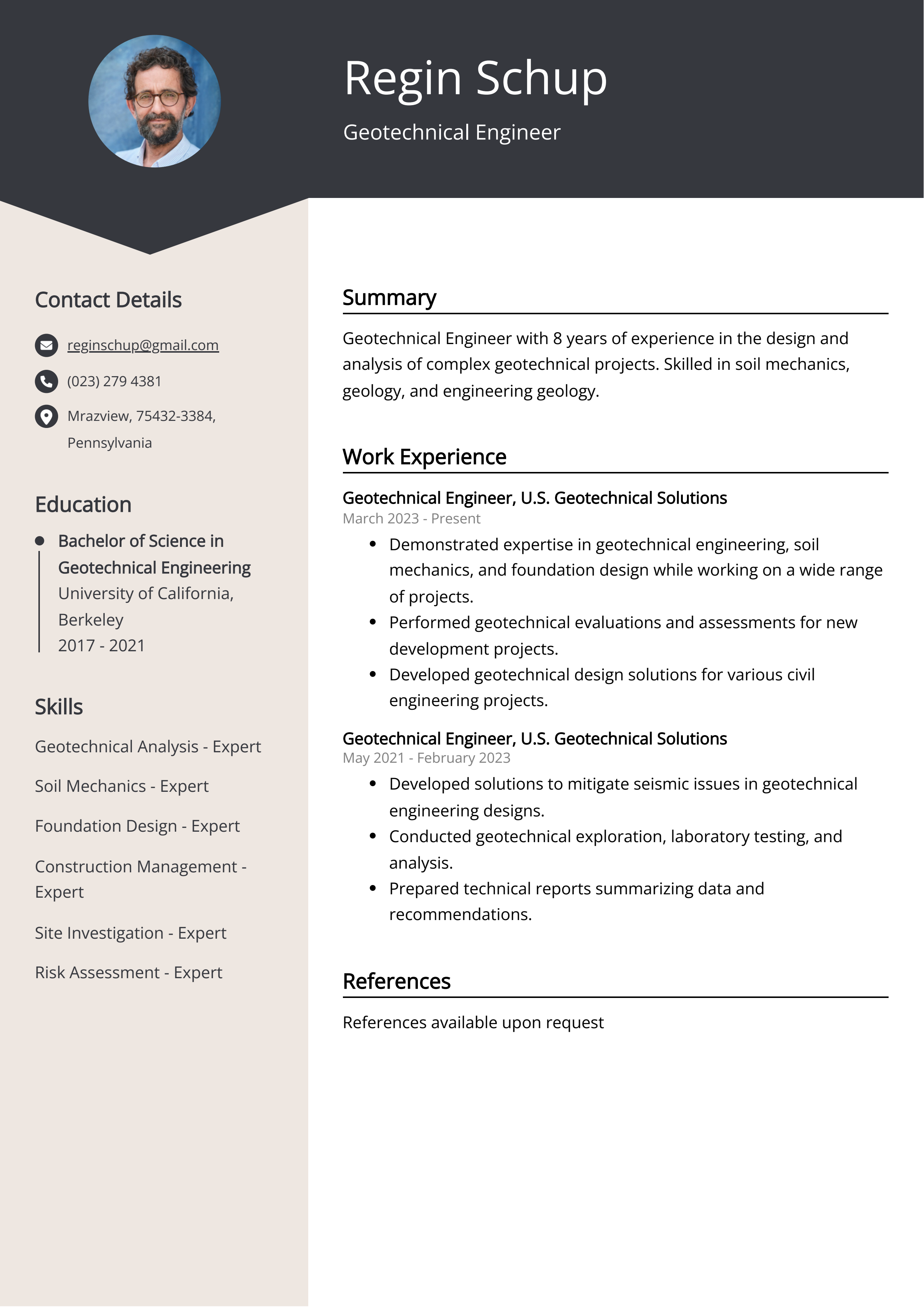Getting My Geotheta To Work
Getting My Geotheta To Work
Blog Article
What Does Geotheta Do?
Table of Contents8 Easy Facts About Geotheta ExplainedExcitement About GeothetaSome Known Incorrect Statements About Geotheta See This Report on GeothetaThe 8-Second Trick For Geotheta

They perform site investigations, collect samples, do research laboratory tests, and assess information to assess the suitability of the ground for building jobs - Consulting Engineers. Based upon their searchings for, geotechnical engineers supply referrals for foundation style, slope security, preserving frameworks, and reduction of geotechnical dangers. They team up with various other experts, such as engineers, architectural designers, and construction groups, to make sure that geotechnical factors to consider are integrated right into the total task layout and implementation
By assessing the behavior and buildings of dirt and rock, they can identify possible geotechnical risks such as landslides, dirt settlement, or incline instability. Their knowledge assists avoid failures or accidents that could jeopardize lives and property. Right here are some comprehensive responsibilities and duties of a geotechnical engineer: Website Investigation: Geotechnical designers conduct website examinations to collect data on subsurface conditions.
They analyze the information to comprehend the residential properties and actions of the dirt and rock, including their strength, permeability, compaction characteristics, and groundwater conditions. Geotechnical Analysis and Design: Geotechnical designers assess the information gathered during site investigations to evaluate the security and suitability of the site for construction projects. They carry out geotechnical computations and modeling to assess variables such as birthing capability, settlement, slope stability, lateral earth stress, and groundwater circulation.
Some Known Facts About Geotheta.
Foundation Design: Geotechnical designers play a vital duty in creating structures that can safely sustain the intended framework. They evaluate the soil problems and load needs to identify the appropriate structure type, such as superficial structures (e.g., grounds), deep structures (e.g (https://www.brownbook.net/business/52934980/geotheta/)., heaps), or specialized strategies like dirt improvement. They think about aspects such as settlement restrictions, birthing ability, and soil-structure communication to develop optimum structure styles
They assess building plans, display site activities, and perform field evaluations to verify that the style suggestions are complied with. If unanticipated geotechnical concerns emerge, they examine the scenario and offer recommendations for removal or adjustments to the style. Risk Analysis and Mitigation: Geotechnical engineers assess geotechnical hazards and risks related to the job website, such as landslides, liquefaction, or dirt disintegration.

Partnership and Communication: Geotechnical engineers function carefully with other professionals included in a project, such as designers, architectural engineers, and building and construction teams. Efficient interaction and cooperation are necessary to incorporate geotechnical considerations right into the general task design and building procedure. Geotechnical designers provide technological proficiency, response inquiries, and make certain that geotechnical requirements are met.
The Buzz on Geotheta
Below are some types of geotechnical designers: Structure Designer: Structure designers specialize in making and analyzing structures for structures. They evaluate the soil conditions, tons needs, and website characteristics to figure out one of the most proper structure kind and layout, such as superficial structures, deep structures, or specialized techniques like stack structures.
They assess the aspects affecting slope stability, such as soil homes, groundwater conditions, and slope geometry, and create strategies to stop slope failings and alleviate dangers. Quake Designer: Quake engineers concentrate on examining and developing structures to stand up to seismic forces. They examine the seismic danger of a website, evaluate dirt liquefaction capacity, and develop seismic layout criteria to ensure the safety and security and strength of structures during earthquakes.
They execute area screening, collect examples, and assess the gathered data to define the soil buildings, geologic formations, and groundwater conditions at a website. Geotechnical Instrumentation Engineer: Geotechnical instrumentation engineers concentrate on surveillance and gauging the habits of soil, rock, and structures. They mount and preserve instrumentation systems that keep an eye on elements such as dirt settlement, groundwater levels, incline movements, and architectural displacements to analyze efficiency and give very early warnings of possible issues.
What Does Geotheta Mean?
They perform examinations such as triaxial examinations, debt consolidation tests, straight shear tests, and leaks in the structure examinations to collect information for geotechnical analysis and design. Geosynthetics Engineer: Geosynthetics designers specialize in the layout and application of geosynthetic materials, such as geotextiles, geogrids, and geomembranes. They utilize these materials to boost soil security, reinforce inclines, provide drainage solutions, and control erosion.
They often tend to be investigatory individuals, which implies they're intellectual, introspective, and curious. They are curious, systematic, sensible, analytical, and rational. Some of them are also social, implying they're kind, charitable, cooperative, her response patient, caring, useful, empathetic, sensible, and pleasant - Geo Tech Engineering.
In the office atmosphere, geotechnical designers utilize specialized software program tools to perform calculations, produce designs, and evaluate data. They prepare reports, review task specs, connect with customers and group participants, and coordinate task tasks. The office setting gives a helpful atmosphere for research study, analysis, and cooperation with other professionals included in the project.
Not known Incorrect Statements About Geotheta
They often visit project sites to conduct website examinations, analyze geotechnical conditions, and collect data for evaluation. These check outs involve taking a trip to different areas, in some cases in remote or challenging surfaces. Geotechnical engineers may do soil sampling, conduct tests, and display building and construction tasks to guarantee that the geotechnical aspects of the job are being carried out properly.
Geotechnical designers also operate in specialized geotechnical research laboratories. In these centers, they perform experiments, carry out tests on dirt and rock samples, and examine the design residential properties of the materials. Geotechnical research laboratory designers work extensively in these environments, dealing with screening equipment, running instruments, and taping data. They work together with other laboratory personnel to guarantee exact and reputable testing results.
Report this page